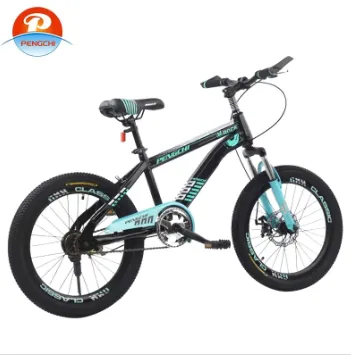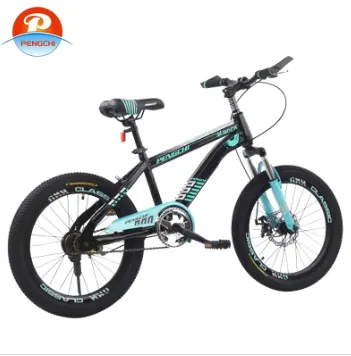
-
 ʻApelika
ʻApelika -
 Apapika
Apapika -
 ʻŌlelo Belarusa
ʻŌlelo Belarusa -
 Penekali
Penekali -
 Pukalia
Pukalia -
 Koalia
Koalia -
 Keka
Keka -
 Kenemaka
Kenemaka -
 Hōlani
Hōlani -
 Pelekania
Pelekania -
 Pinilana
Pinilana -
 Palani
Palani -
 Alemania
Alemania -
 Helene
Helene -
 ʻŌlelo Hawaiʻi
ʻŌlelo Hawaiʻi -
 Hepela
Hepela -
 ʻAʻole
ʻAʻole -
 Hunakalia
Hunakalia -
 ʻInikonia
ʻInikonia -
 Ipelana
Ipelana -
 Ikalia
Ikalia -
 Kepanī
Kepanī -
 Kawanī
Kawanī -
 ʻŌlelo Kazaka
ʻŌlelo Kazaka -
 Khmer
Khmer -
 Kolea
Kolea -
 ʻŌlelo Kyrgyz
ʻŌlelo Kyrgyz -
 TB
TB -
 ʻŌlelo Lākni
ʻŌlelo Lākni -
 ʻŌlelo Lukemapuka
ʻŌlelo Lukemapuka -
 Mālei
Mālei -
 Maianamara
Maianamara -
 Nolewai
Nolewai -
 Pelekia
Pelekia -
 Pōlani
Pōlani -
 Pukikī
Pukikī -
 Lomānia
Lomānia -
 Lukia
Lukia -
 ʻŌlelo Serbia
ʻŌlelo Serbia -
 Kolowakia
Kolowakia -
 ʻŌlelo Somalia
ʻŌlelo Somalia -
 Kepania
Kepania -
 Kuekene
Kuekene -
 Kakalo
Kakalo -
 Kailani
Kailani -
 Tureke
Tureke -
 ʻŌlelo Kuleke
ʻŌlelo Kuleke -
 Ukrainian
Ukrainian -
 Uighur
Uighur -
 Vietnamese
Vietnamese
Apr . 15, 2025 18:14 Hoʻi i ka papa inoa
Children bike: Cultivate early carriers of independence and self-reliance

children bike, As a combination of toys and transportation, it plays a crucial role in the growth process of children. It is not only a companion for children to play and have fun, but also an important carrier for cultivating independent spirit and exercising physical coordination ability. From a psychological development perspective, owning and learning to ride children's exercise bikes is an important way for children to establish a sense of self-efficacy. In the initial stage, children need to overcome fear, learn balance, and master direction and speed control. Every success, every small improvement, will enhance their confidence and make them realize that they can master new skills through their own efforts. This sense of achievement is a powerful driving force for them to continue learning and exploring. When they can proficiently ride bicycles, freely shuttle on trails, and even compete with their peers, their confidence will be further enhanced and gradually form independent personalities.
From a physiological developmental perspective, children's bikes play a positive role in enhancing children's physical coordination abilities
Riding children's stationary bike requires the coordinated cooperation of all muscles in the body, especially the leg muscles, abdominal muscles, and back muscles. During the cycling process, children need to constantly adjust their posture and maintain balance, thereby enhancing muscle strength and endurance. Meanwhile, riding a bicycle also requires good hand eye coordination and spatial perception. Children need to adjust their direction and speed in a timely manner according to changes in road conditions and surrounding environment, which has a positive promoting effect on their nervous system development.
The safety issues of children's bikes cannot be ignored
It is crucial to choose the appropriate vehicle model, equip it with necessary safety gear (such as helmets, knee pads, elbow pads, etc.), and choose a safe riding track. Parents or guardians should provide children with proper guidance and supervision to ensure that they enjoy the fun of cycling in a safe environment. At the same time, children should also be educated to abide by traffic rules, cultivate their safety awareness, and avoid accidents.
In summary, bikes for children's, as an educational and entertaining tool, are of great significance in cultivating children's independent spirit and exercising their physical coordination ability. We should attach importance to the role of children's bikes in their growth process, provide them with a safe and suitable riding environment, and enable them to grow up healthy and learn happily during the cycling process, laying a solid foundation for their future development. children bike are not just toys, but also investments that hold great hope for their future development.
Children's Bikes FAQs
How to choose a bicycle size suitable for children?
The size of children's bikes is usually selected based on the diameter of the wheels and the height of the child:
12 inches: Suitable for 24 years old, height 85100 cm.
14 inches: Suitable for 35 years old and 95110 cm tall.
16 inches: Suitable for 46 years old, height 105120 cm.
20 inches: Suitable for 69 years old, height 115135 cm.
24 inches: Suitable for 811 years old and 130150 cm tall.
When making a choice, ensure that the child's feet are flat on the ground and the stride height is appropriate.
What safety accessories do children bikes need?
Helmet: Must be worn and of appropriate size.
Knee and elbow pads: It is recommended to wear them when starting to ride.
Reflective strips or car lights: Improve visibility at night or in low light environments.
Bell: Used to remind pedestrians or other cyclists.
Auxiliary wheels: suitable for children who are just starting to ride, helping to maintain balance.
How to teach children to ride bicycles?
Choose a suitable location: a flat, open, and vehicle free area, such as a park or playground.
Using a balance bike: For young children, they can first use a balance bike to learn balance.
Transition of auxiliary wheels: Starting from bicycles with auxiliary wheels, gradually adapt to riding.
Patient encouragement: Encourage children more, avoid coercion, and maintain the fun of the learning process.
Demonstration and guidance: Parents can demonstrate cycling movements and protect themselves on the side.

What are the materials of children's bikes? Which one is better?
Steel frame: sturdy and durable, but heavier, suitable for families with limited budgets.
Aluminum alloy frame: lightweight and rust resistant, suitable for children bikes that require lightweight design.
Composite materials, such as carbon fiber, are lightweight but expensive, typically used in high-end car models.
For most children, an aluminum alloy frame is a better choice because it balances lightweight and durability.
What are the details to pay attention to when purchasing children's bikes?
Braking system: Choose a brake handle that is suitable for the child's hand shape to ensure that the brakes are sensitive and easy to operate.
Tire type: Inflatable tires are suitable for various road surfaces, while solid tires are maintenance free but have poor shock absorption.
Handlebar and seat adjustment: Ensure that the handlebar and seat height are adjustable to accommodate the child's growth.
Weight: Choose a lighter bicycle for easy handling and transportation by children.
Brand and Quality: Choose well-known brands to ensure the safety of the frame and parts.
-
Types of BMX Bikes: Race vs. Freestyle
NūhouJun.25,2025
-
Mountain Bike Storage Solutions for Small Spaces
NūhouJun.25,2025
-
History and Evolution of Folding Bike Types
NūhouJun.25,2025
-
Custom Bike Accessories That Improve Performance and Comfort
NūhouJun.25,2025
-
Best Classic Children’s Bikes for Safety and Style
NūhouJun.25,2025
-
Affordable City Bikes with Premium Comfort Features
NūhouJun.25,2025

